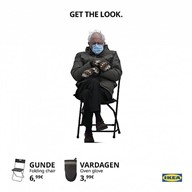ITL #428 Storytelling: the right content and the right context
4 years, 6 months ago
Content may be lauded as King, but without context it is just a piece of text or an image with no actual relevance or emotional attachment. By Carbo Yu.
‘Content is King’ was once a buzzing catchphrase among many PR and communications professionals across different markets. Soon after that, we had another trending line, which was ‘Context is Queen’.
Are these ‘rules’ still timely in today’s PR and comms world? In this article, I will examine the concepts behind storytelling and how to adapt them into the ever-changing, hyperlocal markets, especially during the current period of global pandemic.
Content vs context
According to the Oxford Dictionary, content means ‘the things and information or other materials that are contained in something’. Context, on the other hand, means ‘the situation in which something happens that helps you to understand it’.
The ‘things’ in our PR world can typically be a campaign, a press release, a social media post, a speech, a website article, an eDM or even a virtual event, which has become far more commonplace in recent times. However, the stream of content grows at a pace which has become so overwhelming that audiences have become very selective about what content to read and engage with, opting for that which matters most to them. This is where the saying ‘Context is Queen’ comes into play, leading to the great marriage of storytelling.
Without context, content is just a piece of text or an image with no actual relevance or emotional attachment. This saying has never been as true as it is now as we enter the post-covid era. As each part of the world is at a different stage of the pandemic and experiencing different states of either being-in or coming-out of crisis. This makes localised content, initiatives and campaigns hugely important, even for global brands.
Individual markets have needed to be highly adaptive and agile in their marketing and communications approach to ensure a hyper-local narrative in order to resonate with the ever-changing audience sentiment.
The importance of the ‘2Rs’
What is the Right content and when or where is the Right context? In fact, the two Rs in this question are arguably the key to everything. Because if it is done right, it lifts the communication to the next level by adding another dimension and parameter for the audience to understand, relate and build rapport with.
But, how do we determine what and when is ‘right’?
Answer: The balance of rational and emotional storytelling
Fundamental facts and information are always the basis of every piece of content, while emotions are the primary driver for most audience actions and behaviours, therefore it is crucial to put your brand in the right cultural and emotional context, connecting with customers through understanding their mind-set. Happy, angry, sad, joyous, anxious, humour, and fear, some of these emotional triggers can usually join the dots when we use them right.
Covid-19 is undeniably the strangest context by far which most PRs have faced over the last few decades. Life is uncertain at this moment, as a brand, when an emotional connection is created and nurtured with audiences, additional product value and brand loyalty will follow.
For obvious reasons, being a home grown brand located within its geographic market is sometimes easier to intentionally make the right and timely connection with audiences, but it is not that easy for a global brand.
One of my personal favourites has always been IKEA, as I admire the quick thinking that goes in to creating a clever social media post that has local market context and connection, yet is also managed and delivered in a globally ‘on-brand’ way that is consistent, creative and light-hearted.
Some content examples:

Context in Taiwan: Taiwan has undergone a massive blackout, affecting four million households.
Local Content: Little candles like these can still brighten up your day!

~
Context in Hong Kong: Karaoke party rooms are some of the businesses forced to temporarily close their doors due to covid-19 social distancing measures. Sadly, Hong Kong’s most iconic karaoke operator shut down their business entirely.
Local Content: Use this showerhead to sing karaoke instead!
![]()
Context in the UK: The royal wedding of Prince Harry.
Local Content: Don’t worry! Harry is still available.

Context in the US: The hottest meme of Bernie Sanders at president Biden’s inauguration.
Local Content: Get the look.
In my opinion, these examples demonstrate the juxtaposition of the right content with the right context, consisting of a level of factual product information paired with a light-hearted sense of humour, thus penetrating the crowded sea of content and making a genuine connection with their audiences.
I hope that with this article I have produced a piece of content with context that will resonate with you as a PR professional and will provide some inspiration for your day to day work. May your next content creation be able to marry these approaches and live happily ever after.

The Author
Carbo Yu
Carbo Yu, Regional Director, Sinclair. A seasoned PR pro, Carbo drives integrated communications strategy for clients across the Sinclair portfolio.
mail the authorvisit the author's website
Forward, Post, Comment | #IpraITL
We are keen for our IPRA Thought Leadership essays to stimulate debate. With that objective in mind, we encourage readers to participate in and facilitate discussion. Please forward essay links to your industry contacts, post them to blogs, websites and social networking sites and above all give us your feedback via forums such as IPRA’s LinkedIn group. A new ITL essay is published on the IPRA website every week. Prospective ITL essay contributors should send a short synopsis to IPRA head of editorial content Rob Gray emailShare on Twitter Share on Facebook

